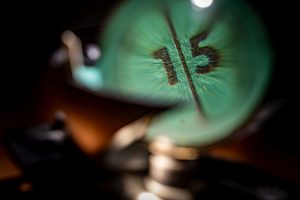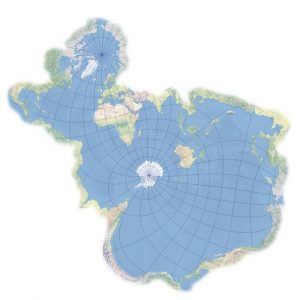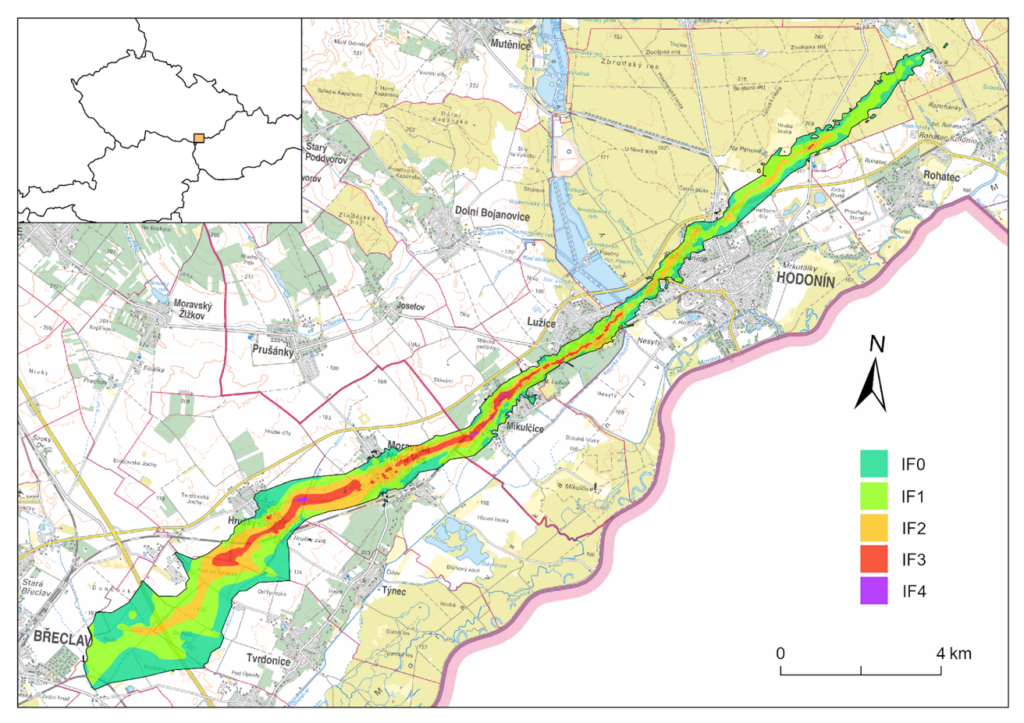June
| View through the glass sphere of the Campbell-Stokes recorder to the green registration card, which was used in the past to record bright sunshine duration. |  |
| The Campbell–Stokes recorder (sometimes called a Stokes sphere) is a type of sunshine recorder. It was invented by John Francis Campbell in 1853 and modified in 1879 by Sir George Gabriel Stokes. The original design by Campbell consisted of large ball lens set into a wooden bowl with the sun burning a trace on the bowl. Stokes's refinement was to make the housing out of metal and to have a card holder set behind the sphere. The unit is designed to record the hours of bright sunshine which will burn a hole through the card.
The crystal ball is typically 10 cm (4 inches) in diameter, and is designed to focus the rays from the sun onto a card mounted at the back and is set on a stand. The card is held in place by grooves of which there are three overlapping sets, to allow for the altitude of the sun during different seasons of the year. The recording of each day goes onto one card. In the northern hemisphere the winter cards are used from 15 October to 29 February, the equinox cards from 1 March to 11 April and 3 September to 14 October. The summer cards are therefore used from 12 April to 2 September. Each card is marked as to the hour, with local noon being in the centre, and is read in tenths Source: Wikipedia contributors, "Campbell–Stokes recorder," Wikipedia, The Free Encyclopedia |
|

World map according to fish (Source: X)
World Oceans Day is an international day that takes place annually on 8 June and reminds every one of the major role the oceans have in everyday life. The concept was originally proposed in 1992 by Canada. The purpose of the World Oceans Day is to inform the public of the impact of human actions on the ocean, develop a worldwide movement of citizens for the ocean, and mobilize and unite the world's population on a project for the sustainable management of the world's oceans.
The world ocean is the body of salt water that covers ~71% of the Earth and contains 97% of Earth's water and is the primary component of the Earth's hydrosphere. The ocean influences climate and weather patterns, the carbon cycle, and the water cycle by acting as a huge heat reservoir.
The World Day to Combat Desertification and Drought is a United Nations observance celebrated each year on 17 June since 1995. Desertification is a global issue, with serious implications worldwide for biodiversity, eco-safety, poverty eradication, socio-economic stability and sustainable development. The purpose of the World Day to Combat Desertification and Drought is to raise awareness of the presence of desertification and drought, highlighting methods of preventing desertification and recovering from drought.
 Sir David Brunt (17 June 1886 – 5 February 1965) was a Welsh meteorologist. He was Professor of Meteorology at Imperial College, London from 1934 to 1952. He was vice-president of the Royal Society from 1949 to 1957.
Sir David Brunt (17 June 1886 – 5 February 1965) was a Welsh meteorologist. He was Professor of Meteorology at Imperial College, London from 1934 to 1952. He was vice-president of the Royal Society from 1949 to 1957.
David Brunt’s pivotal role in putting weather forecasting onto a scientific footing for the first time has led to him being called, ‘the father of meteorology’. Between 1936 and 1939 he contributed to a theoretical understanding of fog dispersal, information used in the development of the FIDO fog dispersal system.
He was elected a Fellow of the Royal Society in 1939 and was awarded their Royal Medal in 1944. He went on to serve as their secretary from 1948 to 1957 and as their vice-president from 1949 to 1957. He served as President of the Royal Meteorological Society from 1942 to 1944 and received both their Buchan prize and their 1947 Symons Gold Medal. He was also president of the Physical Society from 1945 to 1947. He was made a Knight Bachelor in 1949 and Knight Commander of the Order of the British Empire (KBE) in 1959.
On Thursday 24 June 2021 at around 7.20 pm, storms with intense hail and a tornado passed through several villages on the border of the Breclav and Hodonín regions in South Moravia. It was a strong tornado accompanied by secondary vortices, which reached a strength of IF4 on the international Fujita scale (the second strongest level of tornado strength). The tornado lasted 39 minutes and passed through a stretch 27.1 kilometres long and about half a kilometre wide (with variations). Seven villages were critically affected, with Moravská Nová Ves, Mikulčice, Hrušky, Lužice, and parts of Hodonín Bažantnice and Pánov being the worst hit.
About 1,200 to 1,600 structures, including public, agricultural and industrial buildings, as well as a large number of trees and vehicles were damaged in the affected villages. Infrastructure, including the second railway corridor, was severely affected. According to preliminary estimates, the damage to private and public property was estimated at CZK 15 billion. Some 200 houses were identified for demolition. Several hundred injured persons were treated during the evening and the following day, and a total of six persons died.
See also:
 Joseph Stepling (29 June 1716 in Reisgau - 11 July 1778 in Prague) was a Czech-German Jesuit priest, physicist, astronomer, mathematician, meteorologist and teacher. The systematic measurements in Klementinum, which he introduced in 1752, became regular from 1 January 1775 and became the oldest continuous meteorological data in Central Europe. For example, he used his measurements to explain and describe the storm that swept through Central Europe on 17-19 February 1756. In his work he used a barometer to determine the altitude and also monitored the temperature of the water in the Vltava River. He constructed a mercury thermometer with a Réaumur scale. Source: wikipedia.org.
Joseph Stepling (29 June 1716 in Reisgau - 11 July 1778 in Prague) was a Czech-German Jesuit priest, physicist, astronomer, mathematician, meteorologist and teacher. The systematic measurements in Klementinum, which he introduced in 1752, became regular from 1 January 1775 and became the oldest continuous meteorological data in Central Europe. For example, he used his measurements to explain and describe the storm that swept through Central Europe on 17-19 February 1756. In his work he used a barometer to determine the altitude and also monitored the temperature of the water in the Vltava River. He constructed a mercury thermometer with a Réaumur scale. Source: wikipedia.org.

